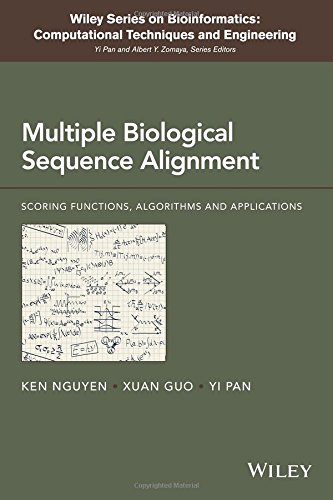

Most ebook files are in PDF format, so you can easily read them using various software such as Foxit Reader or directly on the Google Chrome browser.
Some ebook files are released by publishers in other formats such as .awz, .mobi, .epub, .fb2, etc. You may need to install specific software to read these formats on mobile/PC, such as Calibre.
Please read the tutorial at this link. https://ebooknice.com/page/post?id=faq
We offer FREE conversion to the popular formats you request; however, this may take some time. Therefore, right after payment, please email us, and we will try to provide the service as quickly as possible.
For some exceptional file formats or broken links (if any), please refrain from opening any disputes. Instead, email us first, and we will try to assist within a maximum of 6 hours.
EbookNice Team

Status:
Available4.5
38 reviewsCovers the fundamentals and techniques of multiple biological sequence alignment and analysis, and shows readers how to choose the appropriate sequence analysis tools for their tasks
This book describes the traditional and modern approaches in biological sequence alignment and homology search. This book contains 11 chapters, with Chapter 1 providing basic information on biological sequences. Next, Chapter 2 contains fundamentals in pair-wise sequence alignment, while Chapters 3 and 4 examine popular existing quantitative models and practical clustering techniques that have been used in multiple sequence alignment. Chapter 5 describes, characterizes and relates many multiple sequence alignment models. Chapter 6 describes how traditionally phylogenetic trees have been constructed, and available sequence knowledge bases can be used to improve the accuracy of reconstructing phylogeny trees. Chapter 7 covers the latest methods developed to improve the run-time efficiency of multiple sequence alignment. Next, Chapter 8 covers several popular existing multiple sequence alignment server and services, and Chapter 9 examines several multiple sequence alignment techniques that have been developed to handle short sequences (reads) produced by the Next Generation Sequencing technique (NSG). Chapter 10 describes a Bioinformatics application using multiple sequence alignment of short reads or whole genomes as input. Lastly, Chapter 11 provides a review of RNA and protein secondary structure prediction using the evolution information inferred from multiple sequence alignments.
• Covers the full spectrum of the field, from alignment algorithms to scoring methods, practical techniques, and alignment tools and their evaluations
• Describes theories and developments of scoring functions and scoring matrices
•Examines phylogeny estimation and large-scale homology search
Multiple Biological Sequence Alignment: Scoring Functions, Algorithms and Applications is a reference for resea